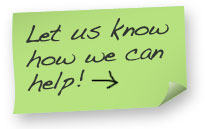 This may get us in so much trouble. Although we’ve used our Professional Role Profiles model to understand teams, discussing it in public is a first.
This may get us in so much trouble. Although we’ve used our Professional Role Profiles model to understand teams, discussing it in public is a first.
Making claims about personality and professional roles is fraught with dangers of bad feelings and misperceptions of the goal. Yet we believe helping people develop their professional skills and optimize their organizations is important enough to take the risk.
Here we go: People have one of the four Primary Role Profiles – and your organization needs all four:
- Creator
- Connector
- Facilitator
- Technician
You also need “Buyers.” But you know who they are and what they do. Your time is too important to rehash what you already know.
Creators define new ideas breaking the status quo or conventional wisdom
(Yes, I know what “Creator” usually means. Can we get past that?) Creators’ ideas redefine a domain or industry and change expectations. Most often, we think of this in new products or services; however, it may also include new approaches to business models, such as new processes or delivery mechanisms. Well-known Creators? Steve Jobs, Copernicus, Elon Musk, Muhammad Yunus (Grameen). Who is their audience? Everyone (remember Steve Jobs’ “I want to make a ding in the universe?”)
Connectors make it make sense for other people to follow a new path defined by Creators
Connectors understand enough about the domain context and, most important, the  motivations of various audiences to influence people’s minds. They understand their audiences’ needs and desires so they can frame the innovation in terms to seduce others to follow. Well known Connectors? Jim Collins, Geoff Moore, Seth Godin, Rob Enderle. And who is their main audience? Builders (and Buyers). They serve Creators, but their audience is Builders (and Buyers).
motivations of various audiences to influence people’s minds. They understand their audiences’ needs and desires so they can frame the innovation in terms to seduce others to follow. Well known Connectors? Jim Collins, Geoff Moore, Seth Godin, Rob Enderle. And who is their main audience? Builders (and Buyers). They serve Creators, but their audience is Builders (and Buyers).
Builders rally and coordinate resources to execute on a Creator’s idea.
Builders have the ability to take an idea that makes sense to them and gather resources to bring it to fruition. Typically, they build based on an idea invented by a Creator and communicated by a Connector in terms that motivate the Builder. The Builder gathers the funds, people, or whatever resources an innovation takes, to bring the idea to reality. Well-known Builders? Henry Ford, Jack Welch, Major George Washington Goethals (Panama Canal, Staten Island Bridge).
Technicians provide skills required by Builders to bring ideas to fruition
They tend to feel more comfortable contributing within an established structure. They too need to be motivated to join a venture—typically by a Builder’s financial motivation, a Connector’s compelling story, a Creator’s vision, or a combination of the three. Well known Technicians? I’m sorry (and I mean that), but until Technicians rise to become Builders (or another category), they are unlikely to be well-known. That doesn’t reduce their importance or power. When we get to Secondary Role Profiles in the future, this become clearer.
So the flow from concept to fruition? Ideas start in the mind of a Creator. They are translated by a Connector who makes it make sense for others to rally behind those ideas. Builders then seize those ideas and rally resources and Technicians to bring that idea or innovation to reality.
To be sure, rare people play multiple roles. Steve Jobs comes to mind again because he is probably the finest combination of Creator, Connector, and Builder I’ve known. Similarly, Elon Musk is proving a inspired combination of Creator and Builder – and he is becoming a better Connector.
We can build on our core profile
We can develop strength in other areas. Without that ability to grow, your PRP truly would be your destiny, not tendency. We believe in type control, so while each person may have tendencies and a comfort zone, people can develop their skills and expand their comfort zone.Remember my comment about “type control?” When I analyzed our own organization, it hit me hard that we were over-represented by one role (me included). Expanding my mindset became a professional development priority.
The model has an critical companion concept: Secondary Role Profiles. It’s a relatively simple idea once you are comfortable with Professional Role Profiles, but separate, so we’ll discuss that in a future post.
Takeaways
- Categorize your people. Keep it private if you want, but do it. You may be shocked at how confident you are once think about it. (Our own organization’s result hit me like a ton of bricks.)
- Find your gaps.
- Hire or develop people to fill them. (I personally decided I needed to develop my own PRP after analyzing the partners in our firm.)
- If you want help, give us a call. We love helping leaders – of any profile – develop more effective teams.
Thanks to Nicole Czarnomski for stylistic “Who am I” graphic.



